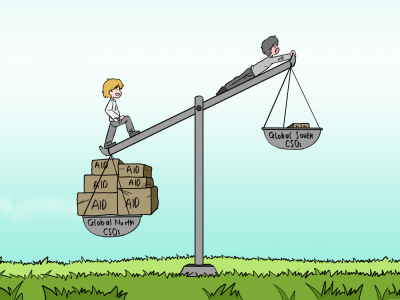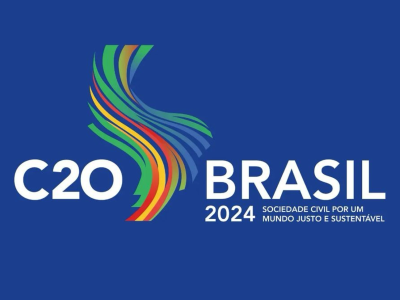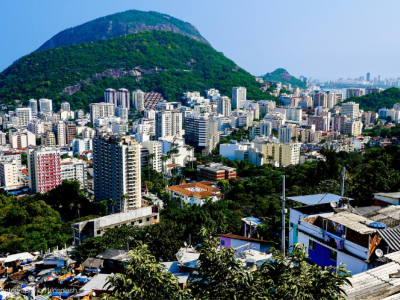Photo: Austro Pakariñan Community Tourism Network
By Gaby Boyer and Circe Peralta
For centuries, communities in Latin America and the Caribbean have promoted practices of mutual support. Strengthening mutual trust, organizing assets and building capacity helps people adapt to changing conditions and opportunities, forming the basis of a growing global practice called community philanthropy, which seeks to achieve lasting results that matter to communities, organizations local civil society and donors.
Indigenous and black communities have vibrant and emerging practices of mutual community support passed down for generations, from tequio or faena in Mexico to minga/minka in Ecuador, Peru, and parts of Colombia.
Recognizing and accounting for the non-financial resources (such as volunteer hours) that grassroots organizations bring to an initiative can generate value for communities. As the following examples, drawn from my work with grantees at a federal international aid agency called the Inter-American Foundation (IAF), show, nonprofits often leverage these traditions and their local assets to improve the lives of community members. .
Honor the dead by expressing solidarity
Kombit refers, in Haitian Creole, to community work. Haitian tradition contributes to a spirit of community and unity through shared achievements. On an IAF team visit to potential grantees, we saw this in action. The leaders of the Association des Femmes pour l'Avancement de Deschamps (OSAFAD), a candidate organization, explained that they had to leave the meeting early because they were organizing a Kombit Lesiv Lanmò to do laundry together by the river for a member who had lost a relative recently.
Dieusibon Pierre-Merite, IAF focal point in Haiti, also highlighted: “This activity strengthens cohesion between group members and also the pride of being a member of this association and the community, and can often help another person in a situation of adversity” . OSAFAD also organized community funds to purchase ingredients so another group could prepare food for the family. Kombit highlights the importance of solidarity to unite communities during emergencies or tragic moments.
Oaxaca: A network of reciprocity and mutual support
Tequio brings together indigenous Mexican communities to carry out work, like the tradition of raising barns in rural America. Everyone is expected to participate in maintaining their roads and highways, building infrastructure projects such as small dams, or collecting trash in the park after a city celebration. Teresa Morales, anthropologist at the Unión de Museos Comunitarios de Oaxaca, an IAF grantee, explains: “It’s the principle of reciprocity, of sharing your own efforts in exchange for the efforts of your neighbor.” When earthquakes made Oaxaca's roads impassable in 2017, communities took care of not only themselves but also other nearby communities. As Luis Ruiz, director of Fundación Comunitaria Oaxaca, an IAF grantee, recalls, communities without machinery used tequio to clear the affected roads: “You would find residents of communities further north clearing the [blocked] roads in the south.”


In the autonomous municipalities of southern Mexico, women are increasingly leading the practice of tequio. In Oaxacan communities like Teotitlan del Valle, famous for its weaving, women have begun to take on new leadership roles. Sofia Gutiérrez, 72 years old, was the first woman to oversee all common lands, including forests and waterways, monitoring people's participation in the tequio. His daughter, Pastora Gutierrez Reyes, heads Vida Nueva, a cooperative of women weavers with more than 25 years of business experience, financed in part by the IAF. Pastor is inspired by her mother's leadership, demonstrating that “in addition to the enormous commitment, [women] have the capacity and increasingly the formal training necessary to assume voluntary leadership positions”.
Minga/Minka in the Andes: asking for help by promising something
The word minga or minka means “to ask for help by promising something” in Quechua. People have been using minga to bring community members together to harvest crops or construct roads and buildings since before the Inca empire dominated the Andes Mountains (present-day Peru, Ecuador, and Colombia).
For Elizabeth Carrión, from the IAF grantee Red de Turismo Comunitario del Austro Pakariñan (Pakariñan), in Ecuador, minga is more than just an activity. The minga is an institution that solidifies the governance and cultural norms of a community. Carrión shares, “It’s not just work. People like to share with each other and have fun.” In Ecuador, young people participate in minga from an early age among indigenous communities, joining monthly committees designated for agriculture, animal care, tourism or water management.
Pakariñan works with community organizations and local schools to promote opportunities and leadership skills among women and girls. Carrión explains that they connect training with minga: “We introduce ‘reciprocal training,’ which means that after a group of women participate in a workshop, they replicate the concepts from the workshop with others in their own communities.”
Accounting for ancestral practices: value for the community
Donors, national and international, are beginning to recognize these ancient practices as part of a community co-investment. Grassroots organizations know that capitalizing on these ancient practices, rather than changing them, helps them better articulate to others the fact that these traditions are essential for their initiatives to be effective in the long term.
Community members are ready to invest extra hours of their own time or offer their land to promote more sustainable agricultural practices, for example, so that others can adopt them accordingly.
For millennia, traditional customs, such as tequio in Mexico and minga in the Andes, have brought community members together for shelter or construction. Donors understand that taking into account people's trust and local capacity built over time and their ability to mobilize local resources for a common goal shows a level of cohesion and pride that can influence the quality of life of people living in communities with fewer resources. Recognition of these assets can also alter power relations and increase expectations for self-sufficiency. This strengthens the promise that an initiative launched through more formal philanthropy will continue to exist in the future as it can be incorporated into community practice.
Funders in Mexico, such as Comunalia, a network of Mexican community foundations, use this strategy to also make development processes more inclusive and convey the message that all community members and institutions can be philanthropists. During the COVID-19 pandemic, Comunalia launched the Active Communities fund, in which US$4.8 million raised by community foundations helped mobilize US$7.34 million in non-financial contributions from communities. Much of this value was contributed through volunteer hours associated with ancestral practices.
Jennifer Arias of Fundación Comunidad in the southern state of Morelos summarized her observations for the IAF in Spanish. A simple translation of his comment reads as follows: “To make the contributions of grassroots organizations visible, Fundación Comunidad strives to monetize these contributions in order to visualize for communities – but also for others – how we mobilize local resources. This is only possible with strong social capital ties between residents, ties that promote trust and mutual aid efforts. This allows us to have a horizontal relationship with grassroots organizations and affirm the autonomy of community organizations.”
Mutual support within the community provides resilience. These age-old traditions make it clear that people are giving at the local level and supporting community development in Latin America and the Caribbean. This mutual support makes communities more resilient in times of crisis. As Morales summarizes, “the only way to have health, prosperity and even spiritual well-being is to participate and reaffirm the willingness to be part of a collective fabric that acts in unity. Grassroots organizations across the region have drawn on these community philanthropic traditions for decades and value these various expressions as development tools. Many international donors, including the IAF, are following the example of these grassroots organizations, where people are donating, sharing and helping every day. At IAF, we have learned that valuing these existing tangible and intangible community assets – such as solidarity – re-energizes local forms of giving such as minga, tequio or kombit. As one of our grantee partners in Oaxaca noted, “valuing these deeply rooted practices can become a virtuous cycle.” This rewards the community for working collectively and trusting each other, creating an incentive to maintain these practices when they see tangible results. These community-generated acts and all they achieve also respond to the widespread myth in the field of international development that only wealthy donors can undertake philanthropic efforts. Community philanthropy initiatives demonstrate that these practices can mobilize, attract and allocate mega-dollars for needed investments.
Thanks
The authors extend their gratitude to Eliana Elias (Minga Peru) for her thoughtful comments and expertise on the Andean practice of minga and its contribution to local development in the Andean region of South America.
Gabriela Boyer
REGIONAL LEADER OF COMMUNITY PHILANTHROPY, Inter-American Foundation (IAF)
During her nearly 20 years at the IAF, Gaby's work has supported a diverse group of grassroots organizations and networks of civil society organizations across Latin America and the Caribbean.
Circe Peralta
CONSULTANT, MEXICAN CIVIL SOCIETY ORGANIZATIONS AND INTERNATIONAL FINANCERS
Circe Peralta served as a board member and executive director of the State of Mexico-based Malinalco Community Foundation for 10 years. She has also worked with the Fund for the Enabling of School Spaces and Voices and Visions of Malinalco.
The original English text can be found here.







